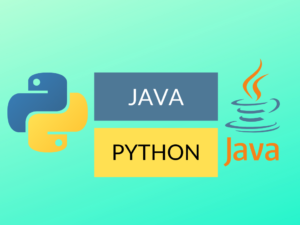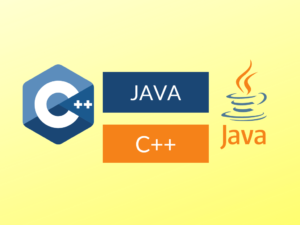Core Java vs Advanced Java: Understanding the Differences
Java is a popular programming language that is used to develop a wide range of applications across different platforms. The language is divided into two main categories: Core Java and Advanced Java. While they share some similarities in terms of syntax, they are quite different in terms of functionality and application. In this article, we will explore these differences in detail to help you understand when to use Core Java and when to use Advanced Java.
What is Core Java?
Core Java is the basic version of the Java programming language. It includes the fundamental libraries and concepts that are essential to learn before delving into more advanced features. Some of the primary features, concepts, and libraries of Core Java include:
- Basic syntax
- Object-oriented programming principles
- Input and output (I/O) operations
- Collections framework
- Concurrency features
- Networking libraries
Examples of Core Java
Here are some examples of applications that can be developed using Core Java:
- Command-line utilities
- File handling applications
- Database connectivity applications
- Network-based applications
- Desktop GUI applications
Uses of Core Java
Core Java is mainly used in developing standalone applications that run on a single machine. This makes it suitable for developing applications that do not require much processing power, such as desktop applications and command-line utilities. Core Java is also used in developing server-side applications that handle file operations and network communication.
What is Advanced Java?
Advanced Java refers to the set of features and concepts that go beyond the basics of Core Java. These features are mainly used in developing web-based applications and enterprise-level software. Some of the primary features and libraries of Advanced Java include:
- Java Server Pages (JSP)
- Java Servlets
- Java Database Connectivity (JDBC)
- Enterprise Java Beans (EJB)
- Java Messaging Service (JMS)
- Java Server Faces (JSF)
Examples of Advanced Java
Here are some examples of applications that can be developed using Advanced Java:
- Web-based applications
- Enterprise-level software
- Backend services for mobile applications
- Financial applications
- Large-scale e-commerce applications
Uses of Advanced Java
Advanced Java is mainly used in developing web-based applications that run on servers. This makes it suitable for developing applications that require heavy processing power, large scalability, and high availability. Advanced Java is also used in developing enterprise-level software that handles complex business logic and data processing.
Differences Table
| Difference Area | Core Java | Advanced Java |
|---|---|---|
| Concepts | Basic Object-Oriented Programming (OOP) Concepts | Advanced OOP Concepts (Inheritance, Polymorphism, Abstraction, Encapsulation) |
| Libraries | Basic Libraries (Collections, I/O, Networking) | Advanced Libraries (JSP, JDBC, EJB, JMS, JSF) |
| Applications | Command-Line Utilities, Desktop Applications, Network-Based Applications | Web-Based Applications, Enterprise-Level Software, Financial Applications |
| Deployment | Standalone Applications (Run on a Single Machine) | Server-Side Applications (Run on Web/Application Servers) |
| Scalability | Low | High |
| Performance | Basic | Advanced |
| Complexity | Low | High |
| Database Connectivity | Basic (JDBC) | Advanced (Hibernate, JPA) |
| User Interface | Native (AWT, Swing) | Web-Based (HTML, CSS, JavaScript, AJAX) |
| Concurrency | Basic (Java Threads, Synchronization) | Advanced (Java Executors, Fork/Join Framework) |
Conclusion
Core Java and Advanced Java are two different programming languages that serve different purposes. While Core Java is used for developing standalone applications that run on a single machine, Advanced Java is used for developing web-based applications and enterprise-level software that requires high scalability and performance. Understanding the differences between these two languages is crucial to choosing the right language for a particular project.
Knowledge Check
Test your knowledge on Core Java and Advanced Java with the following questions:
- What is Core Java used for?
- What are the primary features of Advanced Java?
- Which language is used for developing web-based applications?
- What is the difference between Core Java and Advanced Java in terms of scalability?
- Which libraries are included in Core Java?
- Which language is used for developing enterprise-level software?
- What is the difference between Core Java and Advanced Java in terms of complexity?
- What is the difference between Core Java and Advanced Java in terms of performance?
- Which framework is used for database connectivity in Advanced Java?
- What is the difference between Core Java and Advanced Java in terms of user interface?
Answers:
- Core Java is used for developing standalone applications.
- The primary features of Advanced Java include Java Server Pages (JSP), Java Servlets, Java Database Connectivity (JDBC), Enterprise Java Beans (EJB), Java Messaging Service (JMS), and Java Server Faces (JSF).
- Advanced Java is used for developing web-based applications.
- Advanced Java is more scalable than Core Java.
- The libraries included in Core Java are Collections, I/O, and Networking.
- Advanced Java is used for developing enterprise-level software.
- Advanced Java is more complex than Core Java.
- Advanced Java performs better than Core Java.
- Advanced Java uses Hibernate and JPA for database connectivity.
- Core Java uses native libraries such as AWT and Swing for the user interface, while Advanced Java uses web-based technologies such as HTML, CSS, JavaScript, and AJAX.
Related Topics
Here are some related topics that you may find useful:
- Java Syntax Basics
- Object-Oriented Programming Principles
- Java Collections Framework
- Java Concurrency Concepts
- Java Networking Libraries
- Java Web Development Frameworks
- Java Enterprise Application Development




